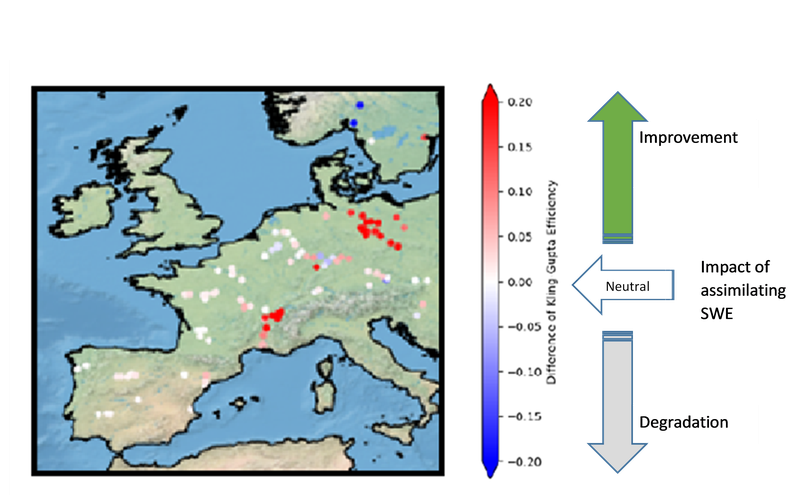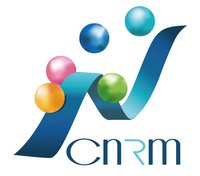Assimilation of ESA CCI snow water equivalent to improve river discharge modelling
Key Results
Using ESA CCI Snow Water Equivalent improves modelled river discharge
- Assimilating ESA CCI Snow Water Equivalent data in a land surface model improves the results of a coupled river discharge model.
- River discharge modelling is useful for many aspects related to human livelihood and well-being, including, but not limited to flood and drought forecasting; understanding changes to water quality; and hydroelectric system management.
Motivation
Snowmelt has a large impact on river discharge, in some areas it is the major source of river flow in the spring, impacting water availability and quality. Modelling water cycle processes is useful for water resources management, particularly with the expected increase in the frequency and duration of droughts and floods due to climate change. The interaction between snow and river flow is a large component in water cycle modelling. To this end, realistic observations of the amount of water contained within the snowpack or Snow Water Equivalent (SWE) will be important for initialising and assessing models.
Experiment
The ESA CCI Snow project[1] has developed a Northern Hemisphere SWE product for the winter seasons (October – May) over the period 1979-2018[2]. The quality of this product is tested by assimilation in a numerical model, which simulates land surface processes and is coupled to a river discharge model (Decharme et al., 2019). The experiment was conducted over Europe over the period 2008-2018.
Results
Modelled river discharge is improved when ESA CCI SWE is assimilated.
The comparison with in-situ river discharge observations (GRDC, 2021) shows that the assimilation of SWE improves the simulations. The improvement was particularly pronounced over the stations located in the Elbe and Rhône river basins (Figure 1). It is interesting that this large improvement is seen in areas which are already well modelled (Gelati et al., 2018).
[1] https://climate.esa.int/en/projects/snow/about/
[2] https://climate.esa.int/en/odp/#/project/snow

References
Decharme, B., Delire, C., Minvielle, M., Colin, J., Vergnes, J.‐P., Alias, A., et al.: Recent changes in the ISBA‐CTRIP land surface system for use in the CNRM‐CM6 climate model and in global off‐line hydrological applications, Journal of Advances in Modeling Earth Systems, 11, 1207–1252, https://doi.org/10.1029/2018MS001545, 2019.
GRDC: Global Runoff Data Centre, Federal Institute of Hydrology, Koblenz, Germany, http://www.bafg.de/GRDC/EN/Home/homepage_node.html, last access: November 2021.
Gelati et al. (2018) Hydrological assessment of atmospheric forcing uncertainty in the Euro-Mediterranean area using a land surface model, Hydrol. Earth Syst. Sci., 22, 2091–2115, https://doi.org/10.5194/hess-22-2091-2018
Gupta, H. V., Kling, H., Yilmaz, K. K., and Martinez, G. F.: Decomposition of the mean squared error and NSE performance criteria: Implications for improving hydrological modelling, J. Hydrol., 377, 80–91, https://doi.org/10.1016/j.jhydrol.2009.08.003, 2009.
About the author

This case study was produced in 2022 as a collective work by CNRM (Université de Toulouse, Meteo-France, CNRS).

